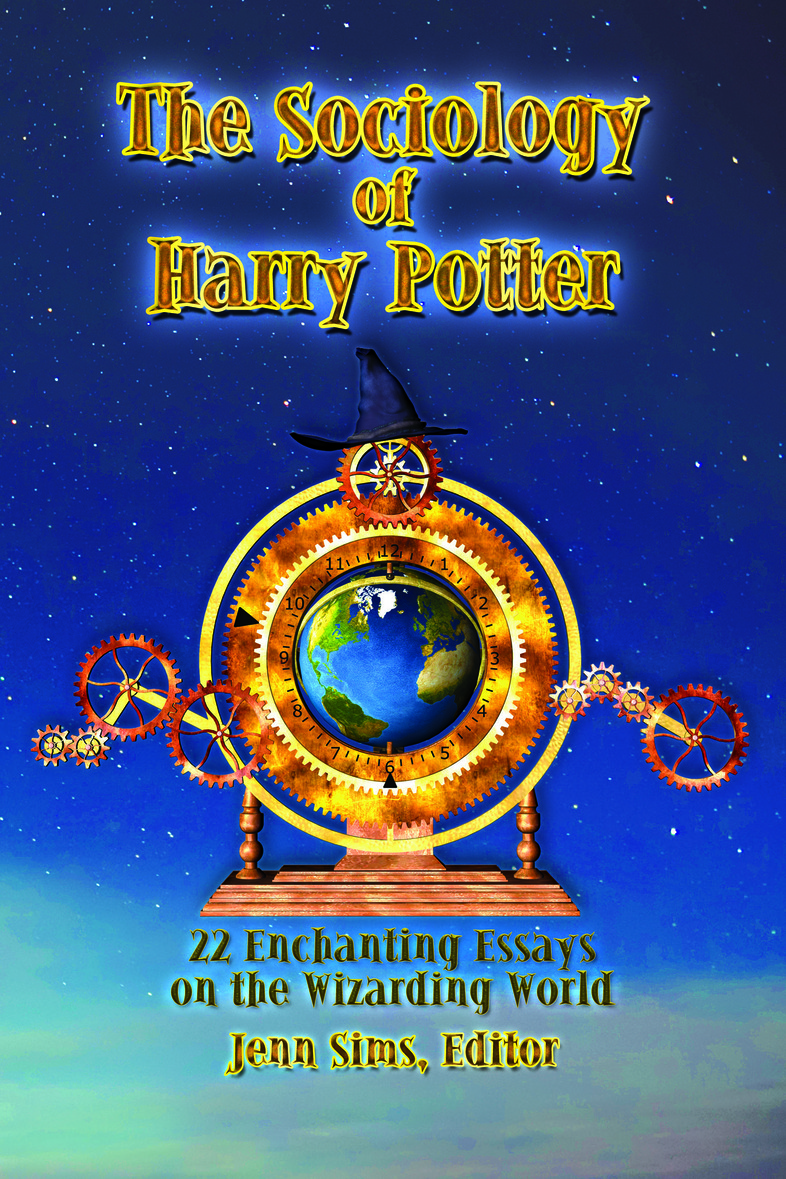Philosophers and psychologists have explored the Harry Potter stories through the lenses of their disciplines, now it’s time for sociologists. In the twenty-two chapters of The Sociology of Harry Potter, social scientists from eight countries cast their imaginations on the wizarding world. From standard topics such as inequality and identity to more contemporary topics such as technology and trauma memory, this essay collection analyzes, not J. K. Rowling’s books as fiction, but her wizarding world as a “real” society. The Hogwarts house system, Quidditch, internet fan fiction and the lives of our favorite witches and wizards are explored in reference to sociological theories and concepts. Fans of these bestselling books will gain insights into the world of Harry Potter as well as sociology. Sociologists and their students will be intrigued to see everyday tools of the trade working magic in another universe.
The Sociology of Harry Potter is organized into six sections modeled on an Introduction to Sociology textbook: Introduction, Society, Institutions, Groups and Identity, Stratification, and Conclusion. The first section consists of two introductory chapters. Chapter one introduces the book and describes the benefits of viewing the wizarding world, and our own real world, from a sociological perspective. The second chapter, entitled “Sociology of Harry Potter 101,” is an introduction to the main themes and concepts of the discipline using material from the series as examples. The second section of the book consists of five chapters that examine wizarding society. The chapters cover the social uses of space, the social construction of technology, adolescent social networks, the interplay between society and the individual, and the function of deviance.
The third section of the book contains three chapters discussing social institutions: one chapter each examining the economy, family, and health care. The fourth section of the book contains five chapters regarding groups and identity. There is one theory chapter, two chapters addressing groups and boundaries, and two chapters on collective identity. Stratification is addressed in the fifth section, with one chapter each addressing gender, race, species, and sexuality. The final section of the book consists of three chapters that extend the analysis from within the world of Harry Potter to that world’s relationship with our virtual, Eastern, and Western world.
The Sociology of Harry Potter is unique in that unlike other disciplinary analyses of the series (i.e., Philosophy and Psychology) it is not simply about the series but also expressly uses the series to facilitate readers’ introduction to and understanding of the discipline of sociology and development of a sociological approach to viewing social reality. It is a case of high quality academic scholarship that is written in a form and on a topic that is accessible to non-academicians. As such, it is intended to appeal to Harry Potter fans and the reading public in general, though it would be respected as quality work in academic circles
The Sociology of Harry Potter is organized into six sections modeled on an Introduction to Sociology textbook: Introduction, Society, Institutions, Groups and Identity, Stratification, and Conclusion. The first section consists of two introductory chapters. Chapter one introduces the book and describes the benefits of viewing the wizarding world, and our own real world, from a sociological perspective. The second chapter, entitled “Sociology of Harry Potter 101,” is an introduction to the main themes and concepts of the discipline using material from the series as examples. The second section of the book consists of five chapters that examine wizarding society. The chapters cover the social uses of space, the social construction of technology, adolescent social networks, the interplay between society and the individual, and the function of deviance.
The third section of the book contains three chapters discussing social institutions: one chapter each examining the economy, family, and health care. The fourth section of the book contains five chapters regarding groups and identity. There is one theory chapter, two chapters addressing groups and boundaries, and two chapters on collective identity. Stratification is addressed in the fifth section, with one chapter each addressing gender, race, species, and sexuality. The final section of the book consists of three chapters that extend the analysis from within the world of Harry Potter to that world’s relationship with our virtual, Eastern, and Western world.
The Sociology of Harry Potter is unique in that unlike other disciplinary analyses of the series (i.e., Philosophy and Psychology) it is not simply about the series but also expressly uses the series to facilitate readers’ introduction to and understanding of the discipline of sociology and development of a sociological approach to viewing social reality. It is a case of high quality academic scholarship that is written in a form and on a topic that is accessible to non-academicians. As such, it is intended to appeal to Harry Potter fans and the reading public in general, though it would be respected as quality work in academic circles
Jenn Sims




The Sociology of Harry Potter: 22 Enchanting Essays on the Wizarding World